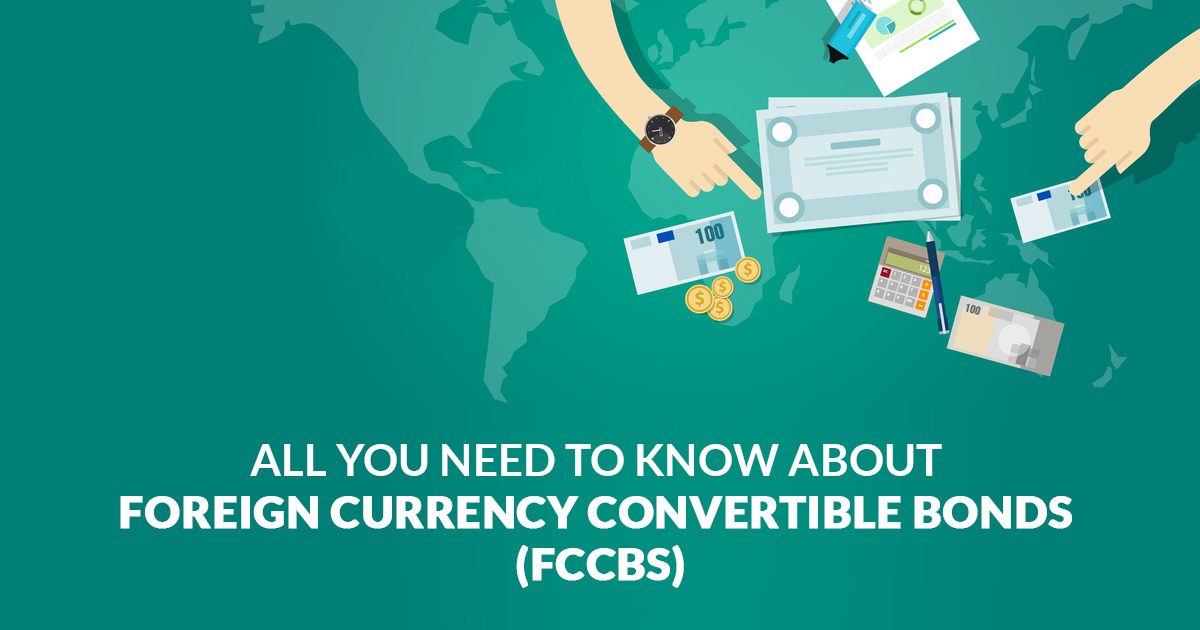Foreign currency convertible bonds, otherwise known as FCBs, are debt securities that act as a credit instrument in foreign currencies. As an investor, you would hold the bonds to get access to the underlying currency without actually buying it. This is beneficial for international investors and corporations who may not have easy access to markets where their own domestic currency is traded.

FCBs were introduced in the early 1990s, by Merrill Lynch and several other investment banks, as a way to strengthen their positions in the world market. They are now issued all over the world. You can understand FCBs by looking at some of their common characteristics and components. The most common way to invest in foreign currency convertible bonds is by buying them on a stock exchange, as you would other securities.
What Is a Foreign Currency Convertible Bond?
A foreign currency convertible bond, or FCB, is a type of bond that allows holders to convert the cash flows on the bonds into other currencies. It offers investors exposure to different markets without having to actually buy and trade the currencies themselves. As such, it is a hybrid debt instrument that helps provide investors with different hedging options to protect their portfolio from fluctuations in exchange rates.
Foreign currency convertibles are issued by U.S. corporations as well as non-U.S. corporations. Although most non-U.S. corporations don’t issue FCBs, there are a few exceptions including Coca-Cola Company which has an FCB issue denominated in Euros.
People buy and hold foreign currency convertible bonds to get exposure to different currencies without having to actually buy it. This is advantageous for investors who have investments in countries that they would like to hedge or speculate on and do not have easy access to foreign markets like the United States dollar exchange market (Dollarization).
How Foreign Currency Convertible Bonds Work
The issuing corporation determines a certain number of bonds to be issued in different currencies. It then sets the maturity date, coupon rate, and currency conversion rate on the bonds.
The investor buys the bonds at issuance and receives the original principal amount of the bond at maturity. The value of each bond is determined by its denomination in one or more currencies as well as the interest payments that are made throughout the lifetime of the bond.
At the end of each period, the value of the bond is determined by:
The term of the bond is set to the maturity date. Maturity is typically set on a one-year, five-year, ten-year, or twenty-five year schedule. Any interim increase in interest payments will work to further inflate the value of a holder’s bond over time. The coupon rate will also affect a holder’s valuation as well.
Foreign currency convertible bonds have a three-month or 180-day standard term.
The principal amount on the bond is converted into cash at the conversion price and paid to the investor immediately. The issuer is obligated to pay interest on the bonds until the conversion date.
The conversion price is determined by dividing the closing exchange rate of a foreign currency against the U.S.
Benefits of FCCBs
- Greater Return
Many investors enjoy a greater return from Foreign Currency Convertible Bonds than from money market funds, because FCBs are more liquid and offer more liquidity.
In addition to the benefit of having a higher return on investment, FCCBs also provide an upper limit on interest rate that investors can receive in contrast to other investments. Earning less interest than the current yield in a bond is referred to as negative carry. FCCBs have no carry periods, so those who buy them will probably have negative carry periods.
- Reduced Risk
In liquidity and interest limitations, FCBs are less risky than bonds with a longer term to maturity. The extreme case of a six-year bond is an owner who could have earned an interest rate in the four digits while holding a securities with a coupon of 0%. While there will be many rates in between these extremes, the risk of being stuck with a bond that pays out very little is likely less likely to occur with an FCCB than any other security.
- Reduced Volatility
The price of FCBs does not swing as much as the price of bonds, which is a phenomena called convexity. The price of an FCCB will fluctuate less than the price of a bond whose value can be seen steeply changing. The volatility in the value of FCBs is likely to be much lower than other bonds.
- Different Currency Exposure
FCBs are very flexible. Through the use of interest payments, bonds can also provide different currency exposure in addition to domestic currency exposure.
When interest rates are high and change currency, it can affect how investors in the U.S. are moving money from one country to another. FCCBs protect investors from this type of exchange rate risk by providing them with the opportunity to invest in other currencies at relatively low risk.
- Other Benefits from Hedging
In addition to capitalizing on interest rate differentials, FCBs can also provide investors with the trade benefits that can be used for hedging their portfolio against foreign exchange risks. By holding a certain number of bonds in other currencies, investors can short or hedge their portfolio, thereby protecting them from any price fluctuations that may occur.
If investors want to invest in a country’s currency and do not want to actually buy it, they can trade contracts instead.1 The investor can then make a profit if the value of the other currency goes up or down relative to their domestic currency.2
- Inflation Protection
FCBs are known to have low interest rate exposure when compared to corporate bonds.3 This characteristic allows them to protect investors from inflation by providing a buffer from the rise of interest rates caused by inflation.
- Investment in New Markets
FCBs can make it easier for an individual investor to invest their money in different countries, markets, and currencies. It also provides investors with the opportunity to increase their return on investment by making riskier investments with a higher yield.



